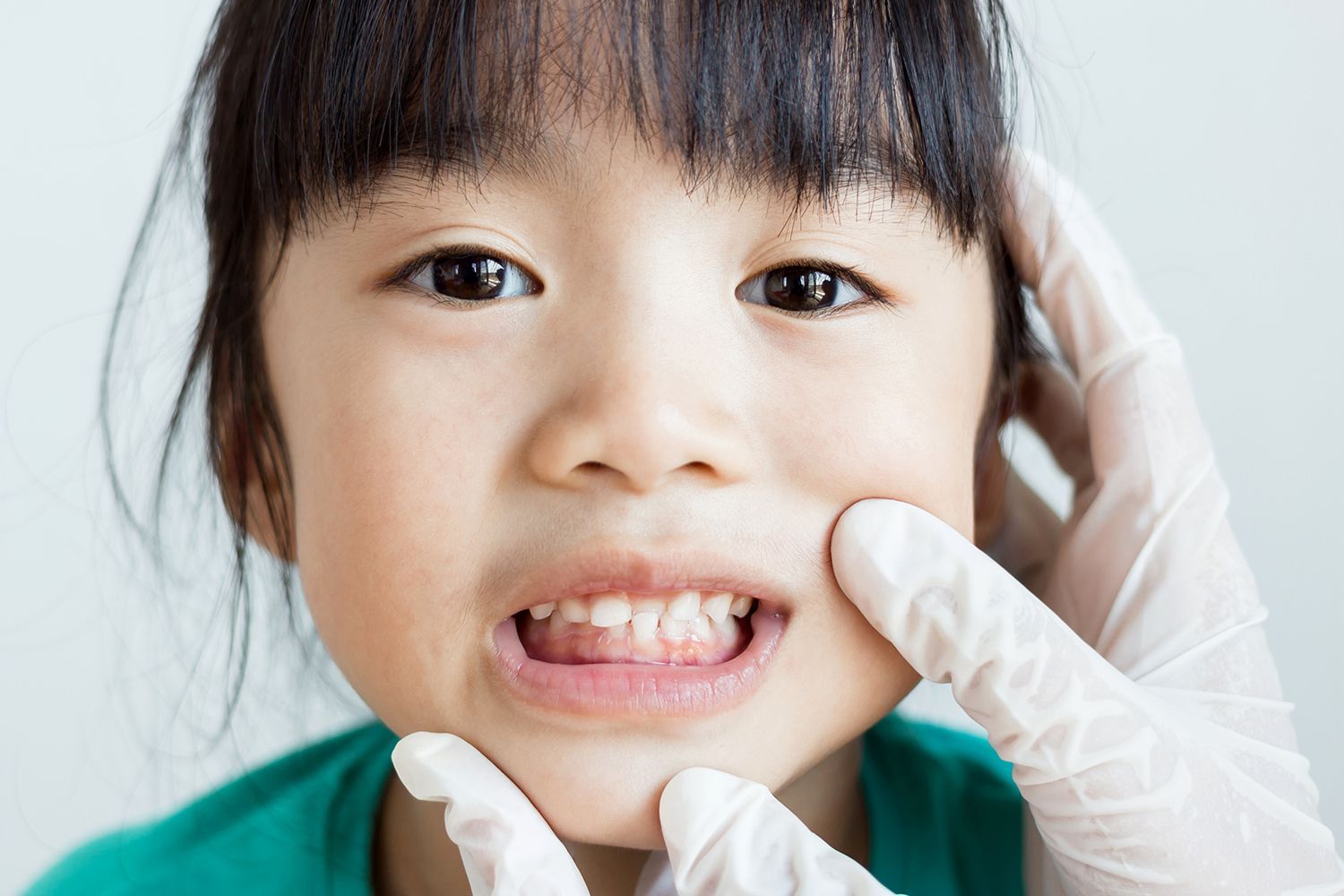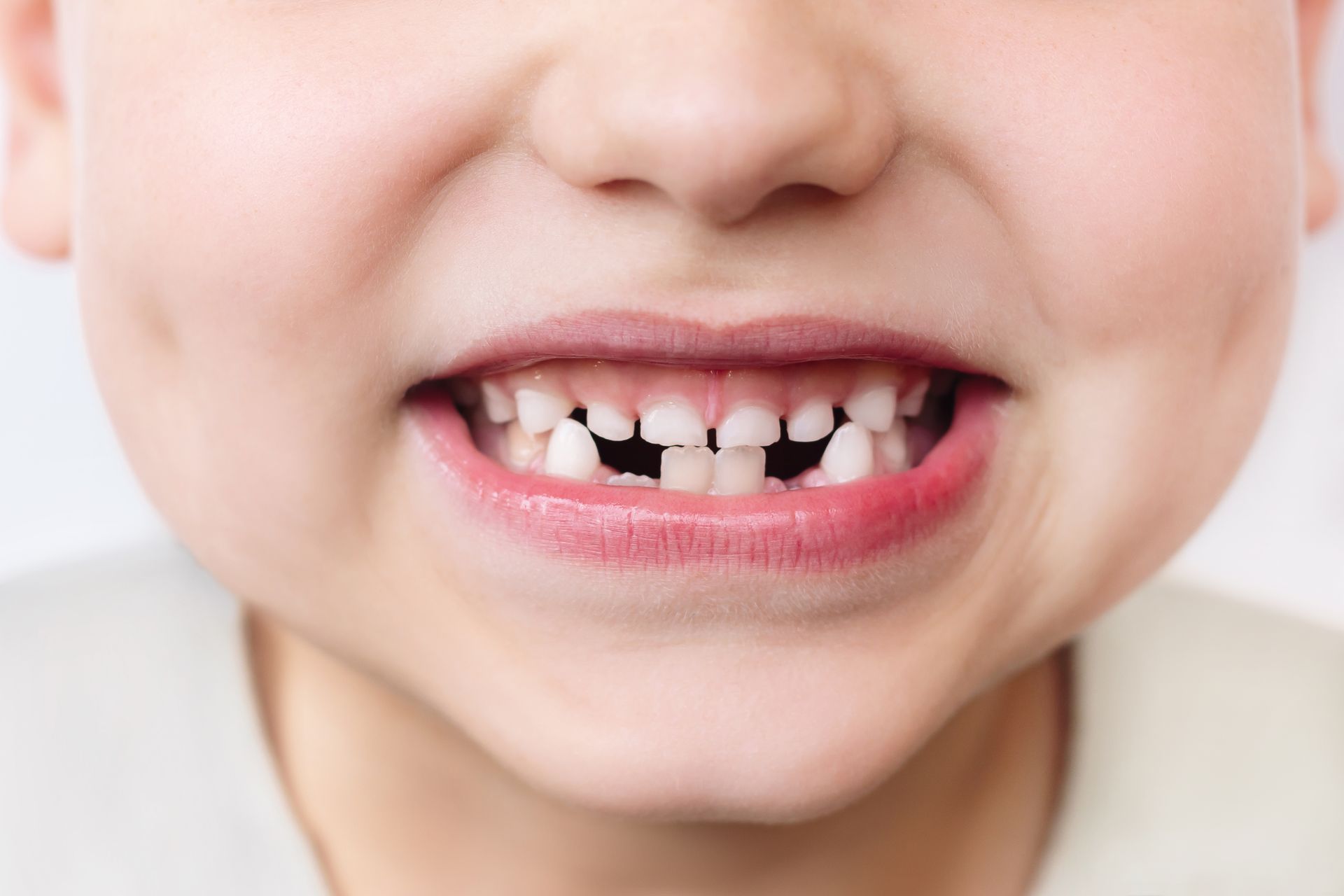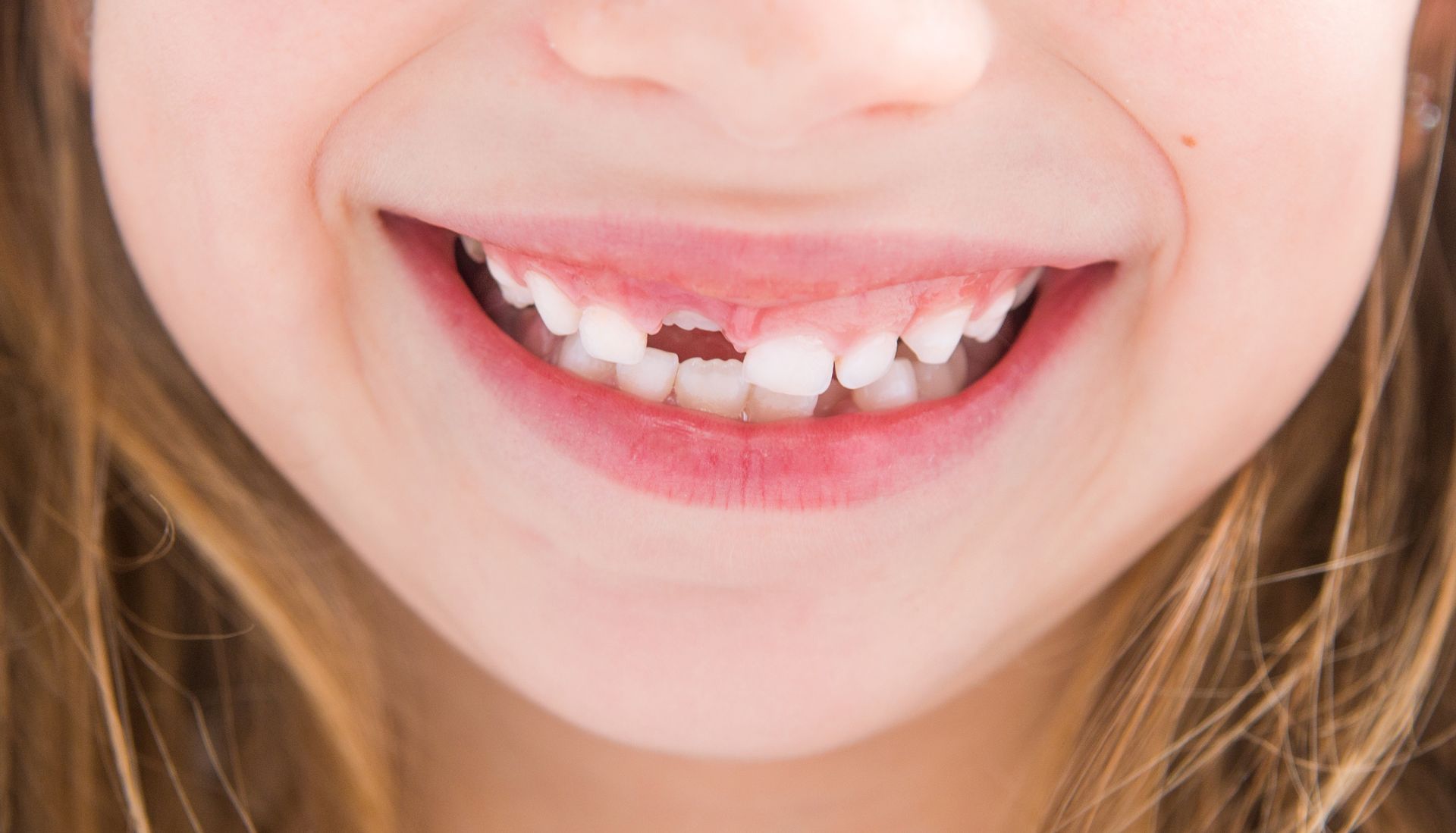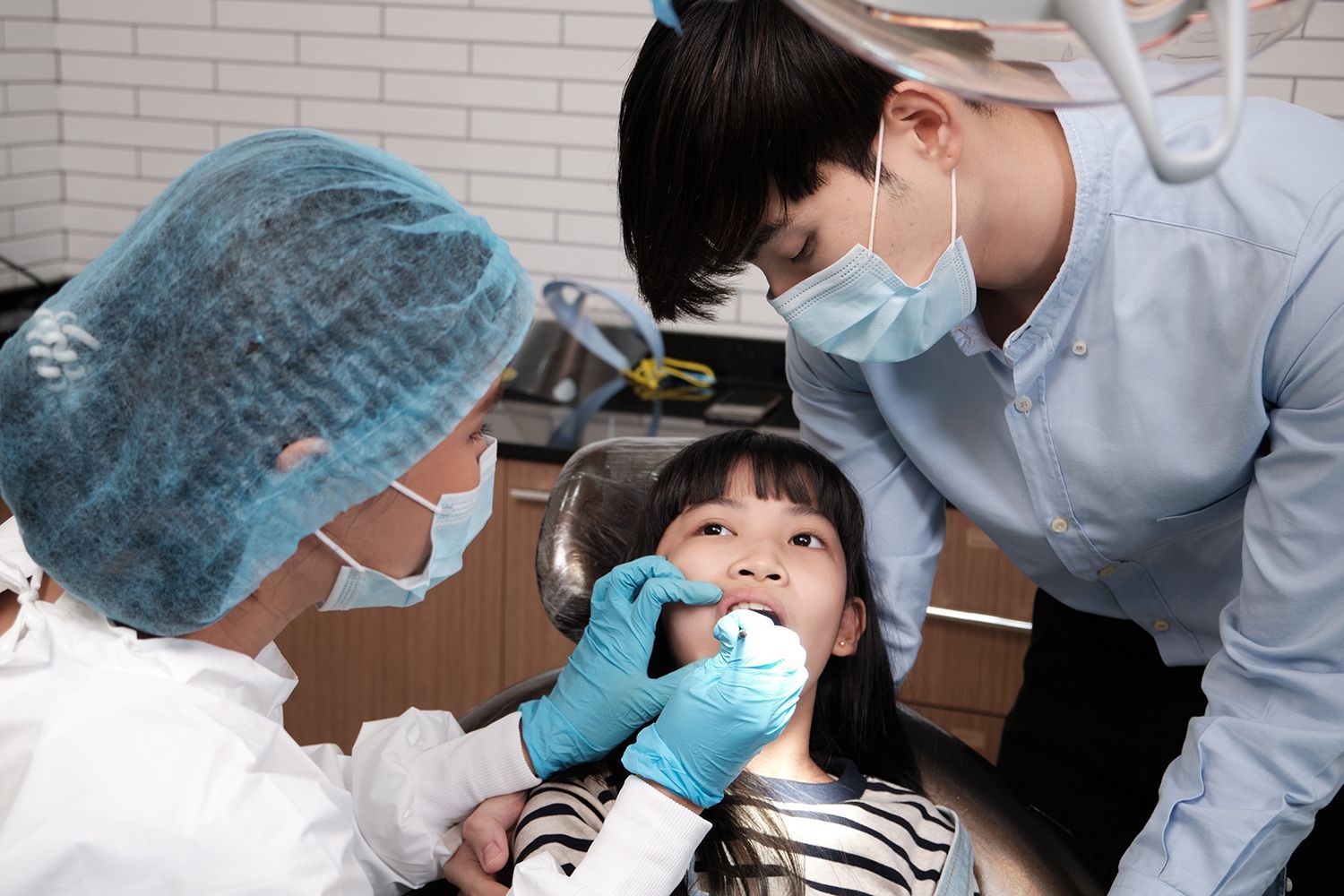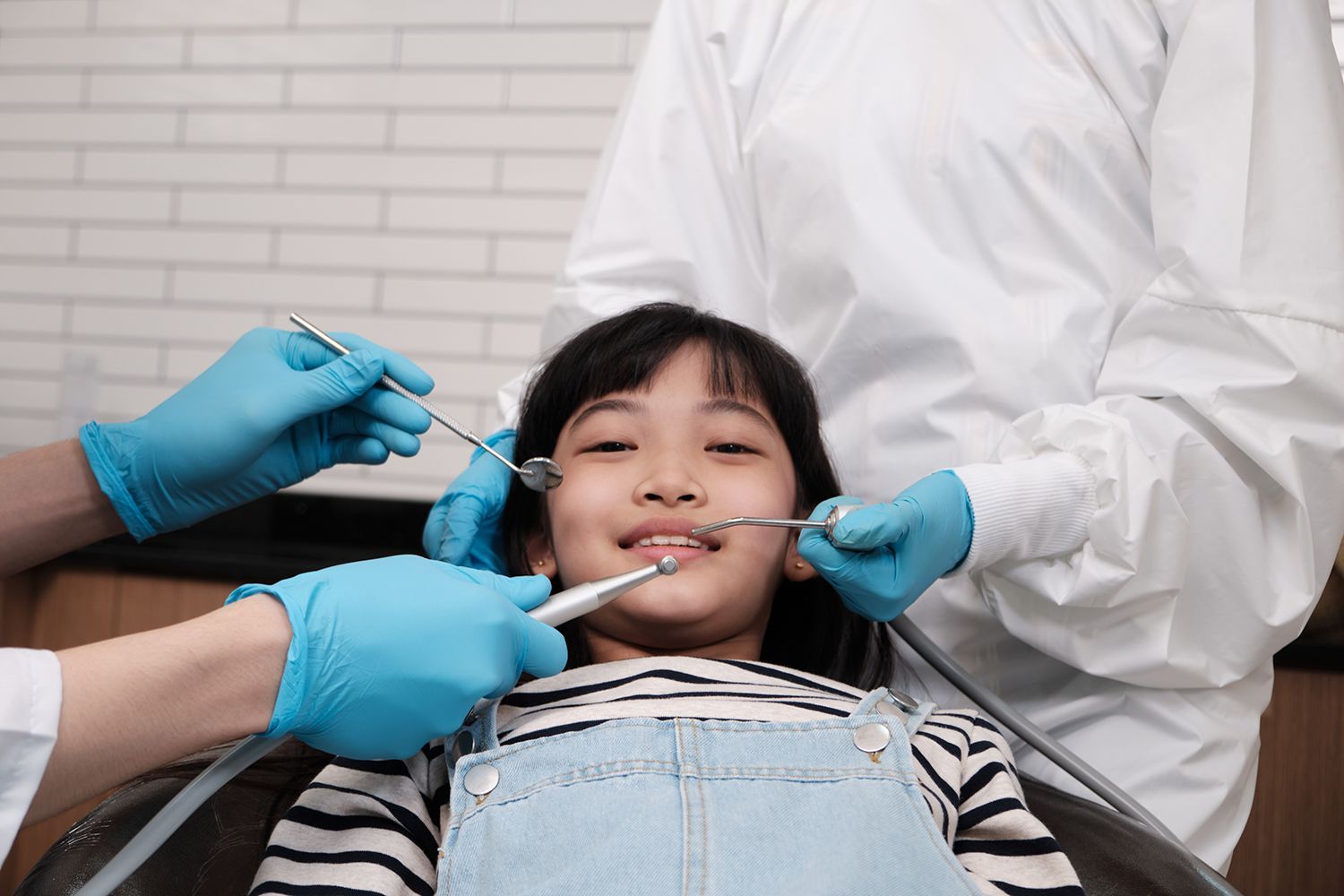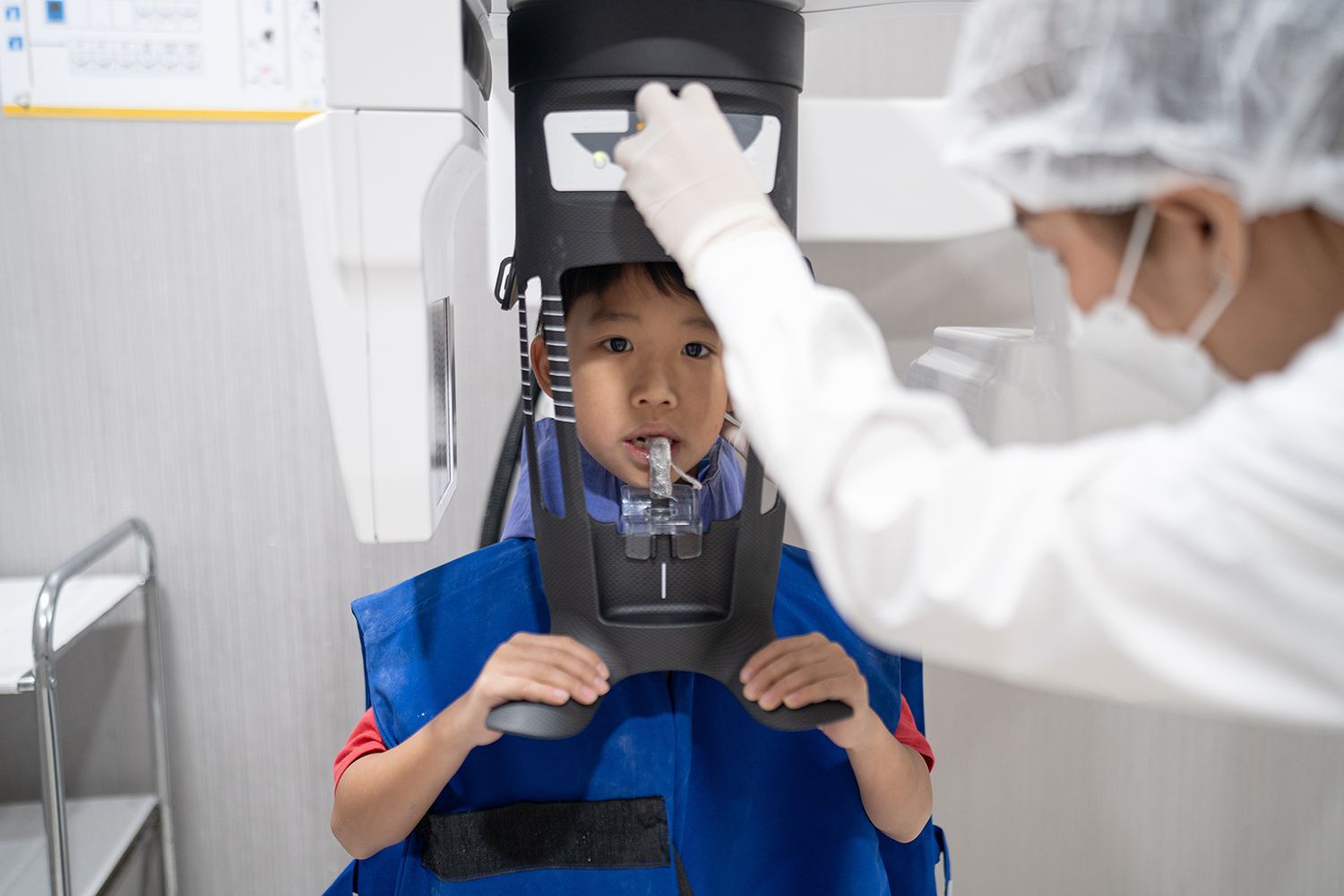Orthodontic Treatment for Children
Phase ONE Orthodontic Care and Dento-Facial Orthopaedics (Ages 5 to 10)
The Significance of Early Orthodontic Examination for Children: Preventing Major Orthodontic Interventions in the Future
Having an early orthodontic evaluation is essential for children to ensure optimal oral health and well-aligned teeth as they continue to develop. By addressing any potential dental issues during the stage known as mixed dentition, it allows for timely intervention that can prevent the need for more complicated orthodontic treatments in the future. At Dr. Catherine Lee Orthodontics, we believe in early diagnosis and treatment. We strongly recommend children have their first orthodontic evaluation between ages five and seven by a child orthodontist.
Signs Your Child Needs Early Orthodontic Treatment
Some symptoms of an underlying dental condition include:
- Early or late loss of baby teeth
- New teeth are coming through abnormally
- Pain or difficulty in chewing or biting
- Thumb or finger sucking
- Constant mouth breathing
- Teeth that aren’t meeting properly
- Speech problems
- Crowded or misplaced teeth
- Facial imbalance or asymmetry
- Shifting or noisy jaws
- Frequent biting of the cheek or the roof of the mouth
Understanding the Transitional Phase: Mixed Dentition Stage
During the mixed dentition stage, which typically occurs between the ages of 5 and 10, children have a combination of primary (baby) teeth and permanent teeth. This is a crucial period for orthodontists to assess any potential orthodontic issues and take proactive steps to prevent them from worsening.
Benefits of Early Orthodontic Treatment for Children
Going to an orthodontist early opens a myriad of options for a young child. Having early intervention in the form of appliances such as face masks, headgear, and expander plates may completely remove the need for getting extensive treatment with braces or aligners later in life.
Because the younger patients are still in the process of facial growth, it is much easier to make alignment adjustments to their teeth and jaws as a specialist orthodontist can use this to their aid.
By the time they have reached adulthood, the bones of the adults are hardened, and the tissues around the teeth are set in with the teeth’s current positions. This may require more extensive or sometimes even surgical treatment.
Children, on the other hand, are still young and developing, so their teeth have not been worn down as they have aged. An orthodontist can focus their care on perfecting their bite as opposed to merely creating a functional bite.
Read more:
Early Interceptive Orthodontic Treatment: Nipping Problems in the Bud
Getting orthodontic treatment early on offers several advantages. One of the main benefits is that it allows orthodontists to detect and treat various dental issues such as crowding, spacing problems, crossbites, overbites, underbites, and jaw misalignments. By intervening at this stage, orthodontists can use preventive methods to effectively influence the growth and alignment of teeth and jaws. This proactive approach helps minimize the severity of orthodontic problems and reduces the likelihood of needing extensive treatment later in life.
Promoting Proper Oral Habits
Getting an early evaluation from a children's orthodontist in Singapore can also help identify and address harmful oral habits such as thumb-sucking and tongue thrusting, which are known to cause dental misalignments. By addressing these habits early on, orthodontists can guide children towards developing healthier oral practices that support proper dental growth.
Enhancing Facial Aesthetics and Self-Confidence
Addressing orthodontic problems at an early stage can have a significant impact on both the physical appearance and self-esteem of children. By addressing these issues during their youth, it is possible to achieve better facial harmony and boost their confidence levels. Early intervention in orthodontics goes beyond simply aligning teeth; it also contributes positively to the overall aesthetic appeal and emotional well-being of young individuals.
Reducing the Need for Invasive Interventions
One advantage of early orthodontic assessment and treatment is the chance to decrease the need for invasive dental procedures later on. By addressing dental issues at an early stage, children can potentially avoid extractions, surgeries, or lengthy orthodontic treatments in the future. This not only saves them from unnecessary discomfort but also helps to lower costs associated with extensive interventions. Early intervention allows for timely correction of problems and promotes optimal oral health without requiring more aggressive measures.
It is crucial to have children evaluated by an orthodontist early on to ensure proper dental development and prevent future issues. By detecting any problems during the mixed dentition phase, orthodontists can intervene with timely treatment. This intervention plays a vital role in guiding the alignment of teeth and jaws, correcting harmful oral habits, and even improving facial aesthetics for children. When parents prioritize their child's dental health at this stage, they are setting them up for a lifetime of having healthy teeth and beautiful smiles. Rest assured that our pre-orthodontic guidance program focuses on safeguarding your children's dental well-being.
Cost-Effective Family Planning with Early Orthodontic Treatment
Incorporating early orthodontic treatment into family planning is a wise financial decision, especially when there are multiple children with potential orthodontic needs. Identifying familial orthodontic trends, treating multiple siblings simultaneously, and preventing future complications through early intervention can lead to substantial cost savings for the whole family.
What Happens During An Orthodontic Check-Up?
Consistent check-ups will enable the dentist to keep track of your child's oral health status, identify any problems in advance and provide preventive care if necessary. Moreover, it can aid in the child becoming less sensitive and developing a positive attitude toward dental visits, thus eliminating their fear of dentists.
Read more:
5 Dentist-Approved Ways to Keep Children’s Teeth Healthy
Your first orthodontic check-up is an important appointment where the orthodontist evaluates your teeth, bite, and jaw alignment to determine if treatment is needed. It’s more of an assessment than a treatment session. Here’s what typically happens:
1. Initial Introduction & Medical History
- You’ll meet the orthodontist and staff.
- You’ll be asked about your Medical and dental history
- Any issues with chewing, biting, jaw clicking, or past dental work
2. Examination
The orthodontist does a visual and physical exam of your:
- Teeth (alignment, crowding, spacing)
- Jaw (bite, function)
- Facial profile (balance, symmetry)
3. X-rays and Photos
- X-rays: Check tooth roots, jawbone, and any unerupted or impacted teeth.
- Photographs: Of your face, smile, and teeth for records and treatment planning.
- Impressions or 3D scans:
May be taken to create a model of your teeth (used to plan treatment or for clear aligners).
4. Diagnosis and Discussion
The orthodontist explains:
- What’s going on with your bite or alignment
- Whether treatment is needed
- Different treatment options (braces, Invisalign, etc.)
- Estimated timeline and cost
5. Q&A and Planning
You can ask questions about:
- Pain or comfort during treatment
- Daily care
- Insurance and payment plans
If you're ready, you might schedule your treatment start date.
How long does it take? Usually 30–60 minutes.
Consult a Pediatric Orthodontist
Consulting a pediatric orthodontist (an orthodontist who specialises in treating children and teens) has several key advantages, especially when it comes to early detection and tailored treatment. Here's why it's beneficial:
Advantages of Consulting a Pediatric Orthodontist
1. Early Detection of Problems
- Pediatric orthodontists are trained to spot growth or alignment issues early, often before all adult teeth have erupted.
- Early intervention can prevent more serious issues later, like severe crowding or jaw misalignment.
2. Specialised Training in Child Development
- They understand how jaw and facial bones develop, which helps them guide growth in a healthy direction.
- They are better equipped to manage mixed dentition (when a child has both baby and permanent teeth).
3. Tailored, Age-Appropriate Treatment
- Treatments are designed with a child’s growth in mind, which can make treatment faster and more effective.
- Techniques like palatal expanders, space maintainers, or early braces can set the foundation for easier treatment later on.
4. Child-Friendly Environment
- Pediatric orthodontic offices are designed to be welcoming, less intimidating, and fun for kids.
- Staff are trained in child psychology and behavior management, making nervous children more comfortable.
5. Better Long-Term Outcomes
- Early monitoring can reduce or eliminate the need for extractions or surgery later.
- Starting orthodontic care early can lead to improved facial symmetry, speech, and chewing function.
6. Parental Guidance and Education
- Pediatric orthodontists spend time educating parents about oral habits (thumb sucking, tongue thrusting), growth patterns, and hygiene during treatment.
When Should a Child See a Pediatric Orthodontist?
The American Association of Orthodontists recommends age 7 for a first visit—even if no visible issues exist.
When thinking about starting a family, it is important to take into account the possible orthodontic problems that may be inherited within the family. Orthodontic issues like crooked teeth, mismatched jaws, and misalignments are often influenced by genetics. That's why early intervention in orthodontics is advantageous not only for the child but also for saving money for the whole family.
- Preventing Future Complications and Costs: One of the major benefits of early orthodontic treatment is its ability to stop orthodontic problems from getting worse. If dental issues are not treated at an early stage, they can become more complicated and costly to fix in the future. By intervening early, we can greatly reduce the chances of needing extensive orthodontic work later on, saving families from both higher costs and lengthy treatments.
- Utilizing Flexible Payment Options: Numerous orthodontic clinics in Singapore provide flexible payment options to cater to the financial requirements of families. Families can make use of these payment plans by commencing early orthodontic treatment. By doing so, they can conveniently distribute the cost of treatment over a longer duration, making it more manageable and allowing them to better budget for their expenses.
- Maximizing Orthodontic Insurance Benefits: If families have insurance coverage for orthodontic treatment, beginning the treatment early can help them maximize their insurance benefits. This is because many insurance plans place restrictions on the amount of coverage or duration of treatment. By starting orthodontic treatment at an early stage, families have a better chance to fully utilize their insurance benefits and potentially lower any out-of-pocket expenses they might face.
By making early orthodontic assessment and treatment a priority, parents can ensure their children's oral health is at its best, enhance their facial appearance, increase self-esteem, and also prepare for a stable financial future.
Will my child's teeth alignment change later?
Research studies have shown that as people age, their teeth may shift. This variable pattern of gradual shifting, called maturational change, probably slows down after the early 20s, but still continues to a degree throughout life for most people. Even children whose teeth developed into ideal alignment and bite without treatment may develop orthodontic problems as adults. The most common maturational change is crowding of the lower incisor (front) teeth. Wearing retainers as instructed after orthodontic treatment will stabilize the correction. Beyond the period of full-retainer wear, nighttime retainer wear can prevent maturational shifting of teeth.





